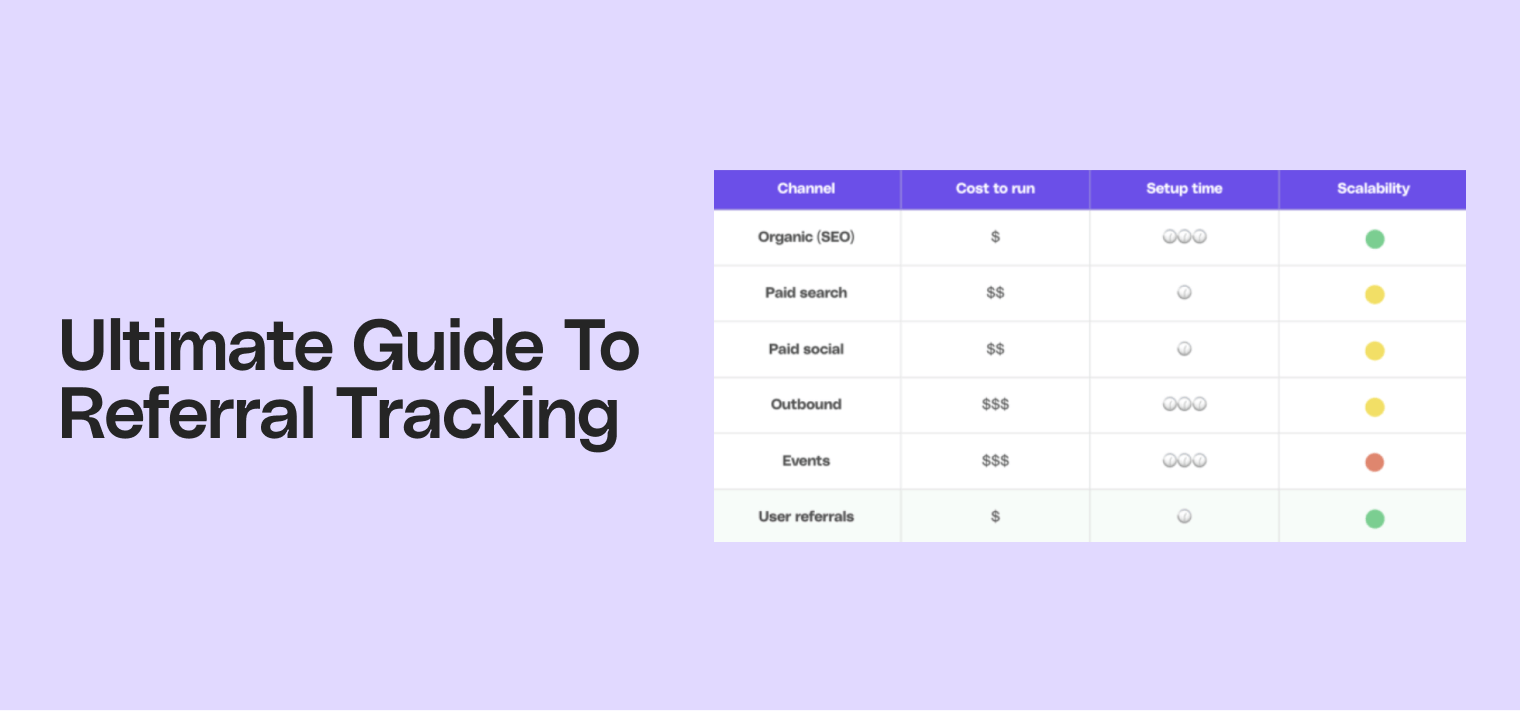TL;DR
- Referral tracking is too important to leave to spreadsheets or patchwork tools. The fastest, most reliable way to unlock the full power of word-of-mouth is to use Cello, referral software built for SaaS.
- With Cello, referral tracking is native to your product (no extra logins, no clunky redirects), automated end-to-end (fraud checks, payouts, tax compliance), and optimized for growth with real-time analytics and in-app engagement triggers. Instead of wasting time cobbling together forms, cookies, or spreadsheets, you get a seamless system that tracks, rewards, and scales referrals automatically.
- If you want referral tracking that actually drives revenue, Cello is the simplest and most effective way to get there.
In today's highly competitive business landscape, word-of-mouth recommendations have become more critical than ever. Still, often referral tracking falls short or is a very time-consuming activity. If done right, referral tracking can be a precious practice that allows businesses to measure the impact of their referral programs and leverage the power of customer recommendations.
In this comprehensive guide, we will explore the importance of referral tracking and outline nine simple and effective ways to track referrals. Whether you are a small business owner or a marketing professional, this guide will provide the knowledge and tools you need to maximize the benefits of referral marketing.
| Key Takeaways | Details |
|---|---|
| Importance of Referral Tracking | Crucial for understanding referral program success. Enables measurement of customer satisfaction and advocacy. Provides insights to optimize marketing strategies. |
| Preventing Referral Frauds | Use tracking to identify and prevent fraudulent activities. Implement robust verification processes. |
| Gaining Sales Insights | Track sales changes and patterns from referrals. Adjust marketing strategies based on referral data. |
| Uncovering Brand Advocates | Identify and nurture top referrers for greater advocacy. Customize rewards and experiences for brand advocates. |
| Essentials for Referral Tracking | Referral links, cookies and UTMs are powering your referral tracking systems |
| Referral Tracking Systems | Referral forms on landing pages, manual tracking, Google Analytics, or specific referral tracking software help you get the most out of your tracking. |
Understanding the importance of referral tracking
Referral tracking plays a crucial role in understanding the success of your referral program and the overall health of your business. By tracking referrals, you can identify which customers are referring others to your business and measure the impact of their recommendations. This information allows you to optimize your referral program, reward your top referrers, and attract new customers through the power of word-of-mouth.
Referral tracking goes beyond just knowing who is referring others to your business. It provides valuable insights into the effectiveness of your referral program and helps you make data-driven decisions to improve your marketing strategies.
Why is referral tracking so important?
1) Referral tracking helps measure customer satisfaction
It helps you measure the success of your referral program and provides insights into your customers' loyalty and advocacy. When customers refer others to your business, it is a testament to their positive experience and satisfaction with your products or services.
By tracking referrals, you can gauge customer satisfaction and identify areas for improvement to enhance the overall customer experience.
Referral tracking allows you to gather feedback from referred customers. By contacting them and asking about their experience, you can gain valuable insights into what aspects of your business they appreciate and what areas may need improvement.
This feedback can then refine your products or services, ensuring that you continue to meet and exceed customer expectations.
Moreover, tracking referrals allows you to measure the effectiveness of your marketing efforts.
2) Tracking conversion rates
Conversion rates are a key metric for any business. Referral tracking allows you to measure the conversion rates of referred customers, providing valuable insights into the effectiveness of your referral program.
Comparing the conversion rates of referred customers to those acquired through other channels, you can assess the performance of your referral program and make data-driven decisions to optimize your marketing strategies.

This helps you allocate your resources more effectively and focus on the channels that bring in the highest quality leads.
Furthermore, tracking conversion rates can help you identify bottlenecks or barriers in the customer journey. By analyzing the conversion rates at different stages of the referral process, you can pinpoint areas where potential customers may be dropping off and take steps to address those issues. This can lead to a smoother and more streamlined customer experience, ultimately increasing your conversion rates and driving business growth.

3) Preventing referral fraud
Referral fraud can be detrimental to your business, undermining the trust and credibility of your referral program. Through effective tracking, you can identify and prevent referral fraud by monitoring patterns, verifying referrals, and setting up safeguards to ensure the integrity of your referral program.
This protects your business and maintains the trust of your customers and referrers.
You can detect suspicious activities or irregularities in your referral program by implementing robust tracking mechanisms. This includes monitoring the number of referrals made by individual customers, cross-referencing referral data with customer purchase history, and implementing referral verification processes (e.g., IP check, browser verification).
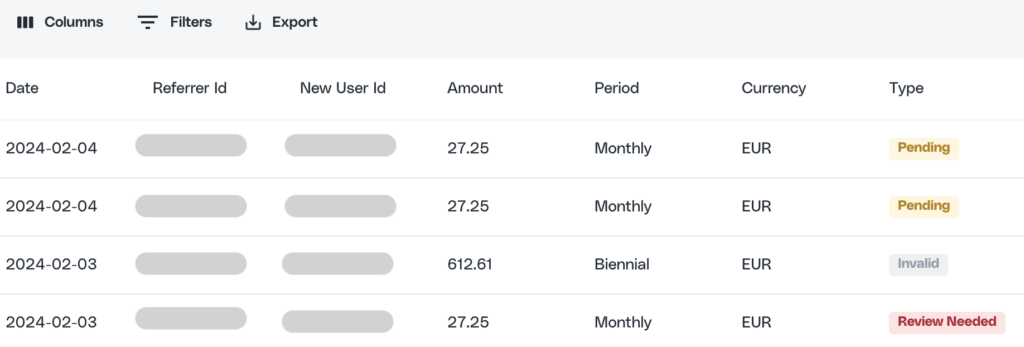
These measures help you weed out fraudulent referrals and maintain the integrity of your program, ensuring that rewards and incentives are distributed to genuine referrers who have contributed to the growth of your business.
Pro Tip
You can also use recurring reward models to prevent fraud. Instead of one-time payouts, stretch the payouts and only pay out a percentage of the monthly recurring revenue generated by the referrer.
4) Gaining insights into sales changes through referral tracking
Referral tracking can provide valuable insights into the impact of your referral program on your sales. By analyzing the sales data of referred customers, you can identify trends, patterns, and changes in your sales performance.
This information lets you make informed decisions regarding your referral program, sales strategies, and overall business growth.
For example, referral tracking may reveal that certain products or services are more likely to be referred by customers. With this knowledge, you can focus your marketing efforts on promoting those specific offerings, potentially leading to increased sales and revenue.
Additionally, referral tracking can help you identify any seasonal or cyclical trends in customer referrals, allowing you to adjust your marketing strategies accordingly and maximize the impact of your referral program.
5) Uncovering brand advocates: the power of referral tracking
Referral tracking helps you identify your top referrers, brand advocates. These are the customers who consistently refer others to your business and have a significant impact on your growth. By recognizing and nurturing these brand advocates, you can deepen their loyalty, incentivize their referrals, and harness the power of their advocacy to drive even more referrals and business success.

Through referral tracking, you can identify the characteristics and behaviors of your power users. This allows you to tailor your marketing strategies and rewards to their preferences, increasing their motivation to refer others to your business. By nurturing these relationships and providing exceptional customer experiences, you can turn your super promoters into brand ambassadors who actively promote your business to their networks, amplifying the reach and impact of your referral program.

Now, let's get to how to track referrals effectively.
9 Simple and effective ways to track referrals
The graph below shows different referral tracking systems and underlying essentials to get the tracking right. These tactics are needed for more advanced ways of doing it. We will start with the essentials before moving to different referral tracking systems.
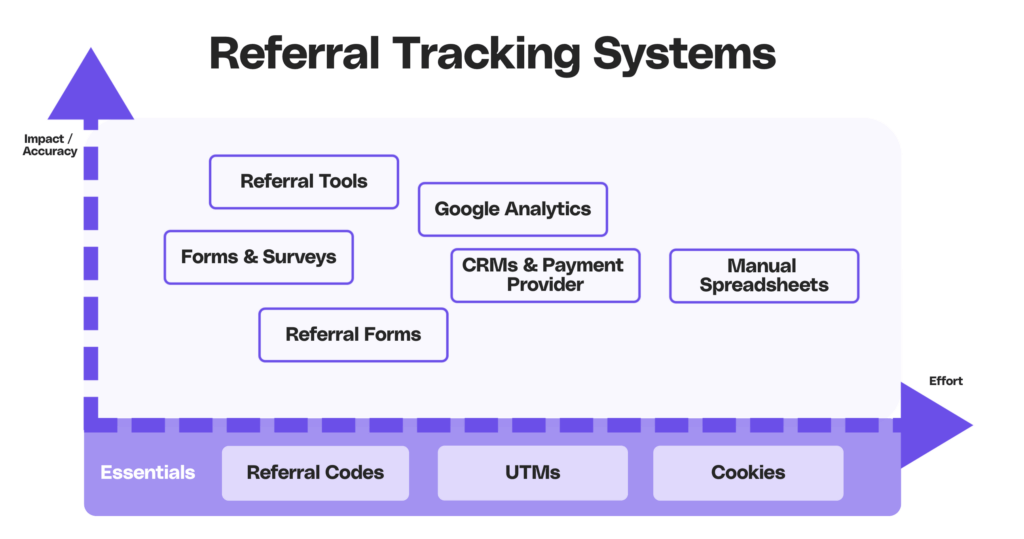
1) Utilizing referral codes for efficient tracking
Referral codes are a common and effective way to track referrals and the prerequisite for many referral systems. By assigning unique codes to referrers and referred customers, you can easily track the source of each referral and attribute them to specific individuals. This allows you to accurately measure the performance of your referral program, reward referrers, and analyze the impact of different marketing channels.

Some things to consider when setting up a referral code:
- Readability: Capital letters can enhance readability and reduce errors, especially in a case-sensitive system.
- Simplicity: Use a format that's easy to remember and share. Short, capital-letter codes are often more memorable.
- Avoid Confusion: Exclude easily confused characters (like "O" and "0", or "I" and "1") to minimize entry mistakes.
- Consistency: Apply your chosen format consistently across all referral codes for uniformity.
- Length: Strike a balance between uniqueness and ease of use; not too long, but long enough to maintain uniqueness.
Pro Tip
Make sure that the referral codes land in your CRM and payment systems and are correctly attributed. To begin with you can also start with manually tracking these in a spreadsheet.
2) Leveraging cookies for accurate referral tracking
Cookies are a powerful tool for tracking referrals, especially in the digital realm. By using cookies, you can track and identify the sources of website visitors and determine whether they were referred by someone. This is a prerequisite for many referral program software and analytics tools to identify your referrals correctly.
| Type | Description | Use in Referral Tracking |
|---|---|---|
| First-Party Cookies | Set by the visited domain. | Securely store referral tracking data, and protect against XSS. |
| Third-Party Cookies | Set by a different domain. | Track behavior on the website, remember user preferences and identify referrer upon return of a website visit. |
| Persistent Cookies | Remain for a specified period. | Attribute sales to the right referral over multiple sessions. |
| Session Cookies | Deleted after the browser closes. | Track session-specific referrals. |
| Secure Cookies | Transmitted over HTTPS. | Secure transmission of referral data. |
| HttpOnly Cookies | Not accessible via client-side scripts. | Persistent tracking raise privacy concerns. |
| Zombie Cookies | Automatically recreated after deletion. | Persistent tracking raises privacy concerns. |
Cookies enable you to attribute conversions to specific referrers, create personalized experiences for referred customers, and optimize your marketing efforts based on accurate data. List them in your privacy policy and have a cookie consent enabled.
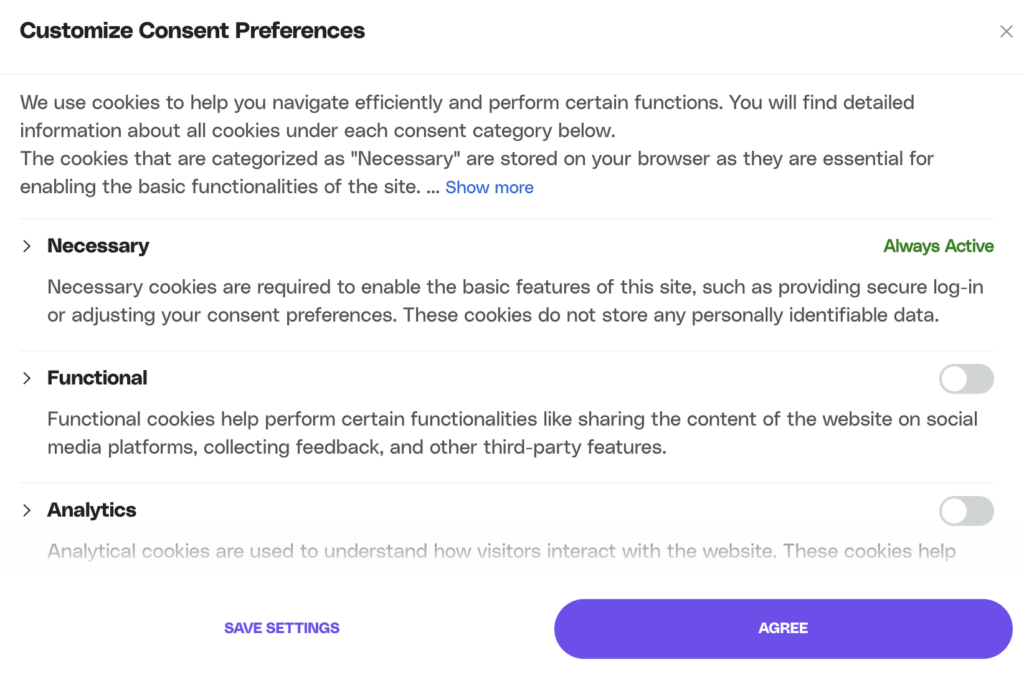
Pro Tip
Especially first-party cookies are important in order to detect returning referees to your website after a while.
3) Maximizing tracking accuracy with UTM parameters
UTM parameters are tags you can add to your referral links to track the effectiveness of different marketing campaigns and channels. Using UTM parameters, you can identify the sources of your referrals in Google Analytics, measure the performance of specific campaigns, and make data-driven decisions to optimize your marketing strategies.

Here's a simplified guide to fill it out
- Website URL: Enter the landing page URL where you direct your traffic.
- Campaign Source (utm_source): Identify where the traffic comes from (e.g., Google, newsletter).
- Campaign Medium (utm_medium): Specify the medium (e.g., email, cpc, social).
- Campaign Name (utm_campaign): Name your campaign for tracking purposes (e.g., "fall_launch").
- Campaign Term (utm_term) [Optional]: For paid search, specify keywords.
- Campaign Content (utm_content) [Optional]: Differentiate ads or links targeting the same URL, useful for A/B testing.
Pro Tip
1) Use consistent naming conventions, preferably in lowercase 2) Make parameter values clear and descriptive 3) Consider using a URL shortener for cleaner links 4) Always test your URLs to ensure accurate tracking.
Having touched the essential elements of referral tracking, let's move to referral tracking systems and look at the impact/ effort ratio.
4) Setting up referral forms
Referral forms are a convenient way for customers to refer others to your business. By setting up referral forms on your website or through email campaigns, you can collect valuable information about the referrer, the referred customer, and the referral context. This data should flow into a backend or CMS and enable you to track and analyze referrals effectively, personalize follow-up communications, and enhance your overall customer experience.

| Impact | Effort |
|---|---|
| Easy to be filled out If placed upon moments of pride (e.g., survey NPS > 9, transactions), higher likelihood of users' participation. | It is relatively easy to set up if you can build a form with your CMS and/or embed it via CRM. You need to have a backend/ CRM in place to track referrals appropriately. |
5) Using feedback and surveys to track referrals
Another straightforward way of tracking referrals is user surveys. Include questions in your signup process or post-purchase surveys asking how the customer heard about you. Although this method relies on self-reporting, it can provide additional insights into referral sources.
You can also ask potential new customers in a sales demo at the very beginning where they heard about you.

| Impact | Effort |
|---|---|
| The accuracy depends on how you look at it. Since the data is self-reported, it might not be 100% accurate, but still gives a very good first overview. | Low, since you just need to include a question about the users' origin in a survey that is connected to a backend or CRM. |
6) Creating a referral tracking spreadsheet
Creating a referral tracking spreadsheet can be an effective and customizable solution if you prefer a more hands-on approach and do not have a lot of budget and/or technical skills. This allows you to manually track referrals, record relevant data, and analyze the performance of your referral program. Below is an example of a referral tracking spreadsheet.

| Impact | Effort |
|---|---|
| This can be accurate if done consistently, but it's difficult to scale. | It takes a lot of time to track it and also take care of potential reward payouts, and it might be challenging to keep accuracy over time. |
7) Harnessing the power of Google Analytics for referral tracking
Google Analytics offers powerful tools and features for tracking referrals and measuring the performance of your referral program. By setting up goals, tracking codes, and implementing UTM parameters, you can gain detailed insights into the traffic sources, conversion rates, and engagement levels of referred customers.

| Impact | Effort |
|---|---|
| It provides a very good overview of the origin of website visitors or sign-ups. Even though referrals are detected no personal information is shared, only anonymized meta data can be analyzed. | Out-of-the box available in Google Analytics 4, to learn more about referral sources/ campaigns UTM tags need to be set-up and specific events published in GA4 which requires technical understanding. |
8) CRM & Payment Systems with built-in referral code generation
Integrate your referral program with Customer Relationship Management (CRM) or payment systems. This allows for seamless tracking of referrals as part of the customer's journey and interactions with your brand.
You need to make sure that the correct coupon or discount is triggered upon successful referral which can be set up in your payment gateway (s. below)
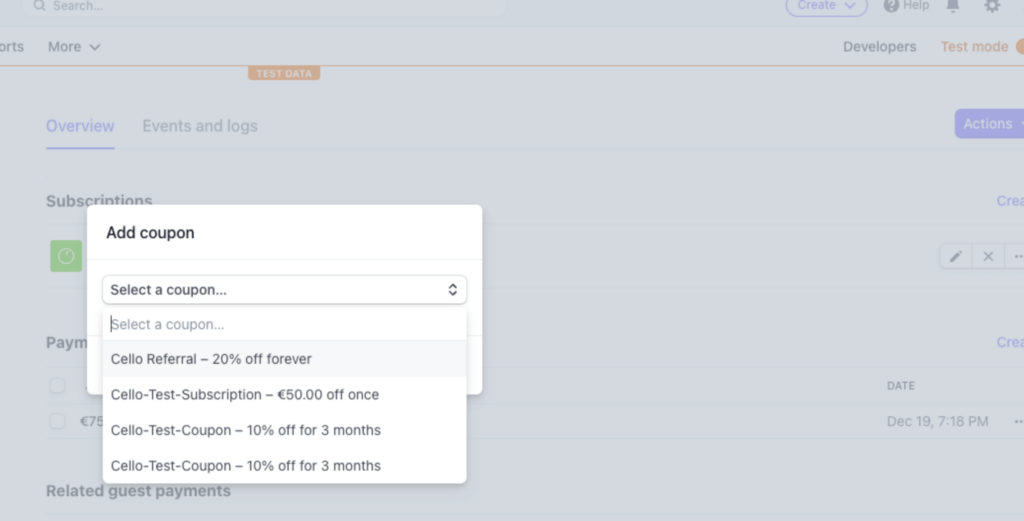
| Impact | Effort |
|---|---|
| It is particularly powerful if referral codes are directly embedded into payment systems and are deduced from subscriptions. | It is low in setup but requires respective tooling. Not many tools support this out-of-the-box. |
9) The benefits of using referral tracking software
Referral tracking software provides a comprehensive and automated solution for tracking referrals. These software solutions offer various features, such as customizable referral links, automated tracking, real-time analytics, and referral program management. By utilizing referral tracking software, you can streamline the tracking process, gain deeper insights into your referral program's performance, and easily manage and reward your referrers.

| Impact | Effort |
|---|---|
| High, since referral program creation and tracking are combined in one tool. It requires a respective tool, though (question of budget) | High, since referral program creation and tracking are combined in one tool. It requires a respective tool though (question of budget) |
Ready to amplify your referral program with Cello?
Now that you're equipped with the knowledge to track referrals effectively, it's time to elevate your SaaS product's growth. Cello transforms your users into powerful advocates, creating a seamless peer-to-peer referral experience that's embedded right into your product. With minimal development time, instant integration, and success-based pricing, Cello is the perfect partner to accelerate your viral growth and enhance user-to-customer conversion rates. Experience the simplicity of Cello's automated rewards and real-time performance tracking. Book a demo today and discover how Cello can turn your referral program into your most valuable growth channel.
Resources
Related Guides

Complete Guide to your B2B Referral Program
Want to get started with B2B referrals? Check out our complete guide to your B2B referral ...
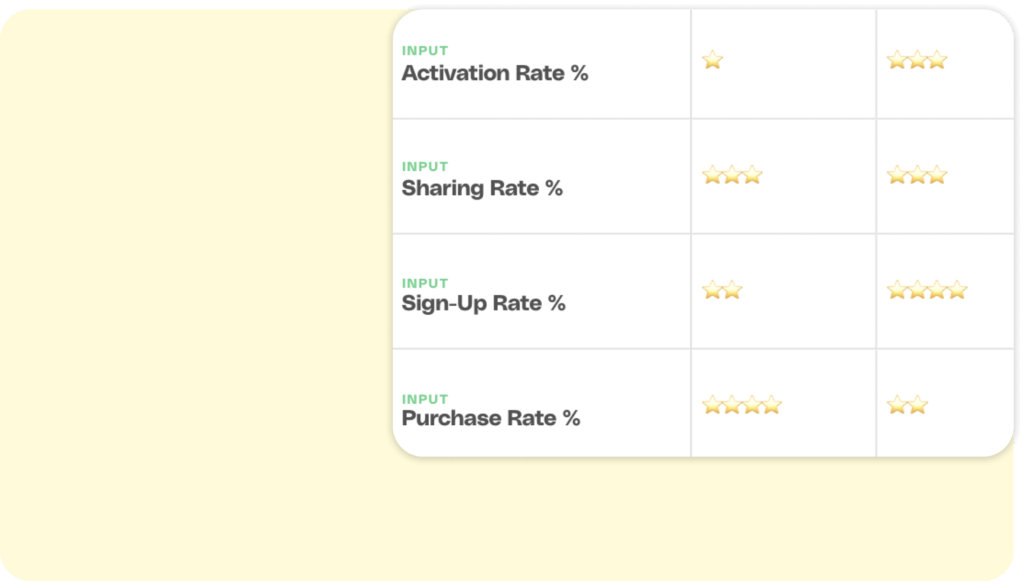
B2B Referral Program KPIs (2023)
Dive into the world of B2B referral program KPIs & benchmarks. Explore successful program ...
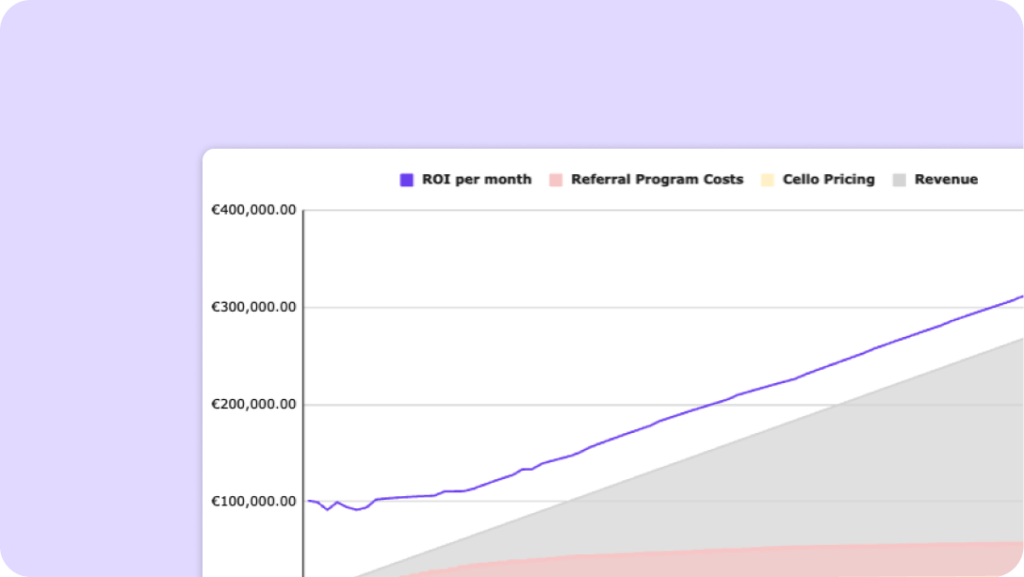
PLG SaaS Referral ROI Calculator
Learn how to estimate and prove the ROI of your PLG Referral Program
